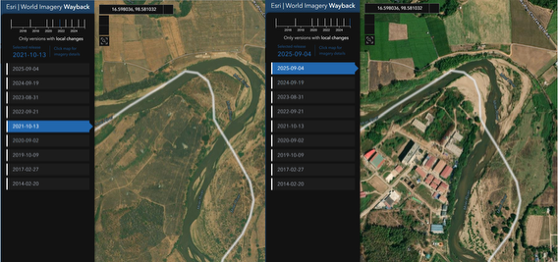India's financial ecosystem is witnessing an alarming evolution in money laundering techniques. As reported by The Economic Times, a sophisticated mechanism has emerged where rogue business correspondents (BCs) and payment aggregators (PAs) exploit bank payment application programming interfaces (APIs) to move illicit funds with unprecedented efficiency.
This scheme represents a significant shift from traditional money laundering approaches, demonstrating how fraudsters continually adapt to technological advancements in the financial sector. By understanding this complex mechanism, financial institutions can better protect themselves and their customers.
The key players

The laundering mechanism revealed: A step-by-step process
Our analysis reveals the money laundering operation follows a systematic process:

Leveraging behavioral intelligence to disrupt the laundering kill chain
This scheme eludes traditional controls for a whole host of different reasons, including because transfers made from one merchant to another aren’t beholden to transaction limits, third-party APIs obscure the origin of the transfer, these transfers happen 24 hours a day in real time, and – by flowing through authorized channels and licensed entities – these transactions mostly appear legitimate.
Yet, there is hope. Behavior-based solutions offer financial institutions a critical intervention point: the mule account. By focusing behavioral intelligence capabilities on these accounts, financial institutions can disrupt the operation downstream, where traditional transaction monitoring often fails.
Behavioral intelligence – analyzing how users interact with banking systems rather than which credentials they use – offers a powerful tool in identifying and isolating mule accounts. The following techniques shift the paradigm from simply monitoring transactions to understanding the users behind them:
- Uncovering anomalous behaviors: Every user exhibits a unique behavioral pattern. When a mule account is activated, or when a legitimate account is commandeered for laundering, its behavioral signature typically deviates. Behavioral intelligence systems can detect such deviations – such as unusual typing rhythms, navigation flows, or device interactions – and flag them in real time.
- Profiling transaction behavior: Establishing behavioral baselines for normal BC or merchant activity allows AI-driven systems to instantly detect irregularities, like sudden bursts of outgoing payments, round-the-clock activity, or deviations in transaction routing. These patterns often precede large-scale laundering events.
- Continuous and passive authentication: Unlike traditional security tools that authenticate at login, behavioral intelligence monitors the entire user session. This enables real-time detection when an account’s behavior no longer aligns with its historical pattern—whether due to account compromise, mule use, or automation scripts.
- Correlated device and network intelligence: Laundering operations often re-use infrastructure—devices, IPs, or even screen resolutions. Behavioral tools can correlate access patterns across multiple accounts to detect when a single device is acting as a hub for multiple mules, even if each session appears legitimate in isolation.
- Turning behavior into a defensive asset: Behavioral intelligence isn't only about spotting fraud. It's also about understanding intent in a landscape where credentials and APIs are too easily compromised. When integrated into the broader AML strategy, behavioral analytics empowers institutions to: pre-emptively block high-risk suspected mule accounts, flag suspicious merchants onboarding with tell-tale behavioral anomalies, and share risk intelligence across institutions without relying on PII, protecting user privacy while increasing collective defense.
As API-driven laundering operations grow more sophisticated, behavioral intelligence enables financial institutions to detect and disrupt them from the inside out—at the level of human behavior rather than machine logic.
The path forward:
As digital payment methods continue to proliferate in India, regulatory scrutiny is intensifying. Financial institutions must deploy multi-layered security approaches that combine traditional controls with advanced technologies like bbehavioral biometrics. Key considerations include:
- Enhanced due diligence: Financial institutions should implement enhanced due diligence processes for BCs, PAs, and merchants, with special attention to those with unusual transaction patterns.
- Real-time monitoring: Implementing real-time transaction monitoring with behavioral analytics can help detect and prevent suspicious transfers before they any money leaves a user’s account.
- Cross-bank collaboration: Improved information sharing between banks about suspicious transaction patterns can help identify laundering networks that span multiple institutions.
- Regulatory technology: Investment in RegTech solutions that leverage artificial intelligence and machine learning to detect suspicious patterns and adapt to emerging threats is essential.
- Public-private partnership: Closer collaboration between financial institutions, regulators, and technology providers will be necessary to stay ahead of sophisticated money laundering techniques.
The BC-PA-API money laundering scheme represents a sophisticated evolution in financial crime techniques in India, exploiting the digital payment infrastructure originally designed to promote financial inclusion and convenience. This case study demonstrates how criminals continuously adapt to exploit technological advancements in the financial sector.
By analyzing the unique Behavioral signatures of legitimate users and identifying anomalous patterns indicative of fraudulent activity, financial institutions can better defend against increasingly sophisticated money laundering techniques.
The effectiveness of India’s anti-money laundering efforts will depend on strengthening regulatory frameworks, enhancing coordination between different agencies, implementing advanced transaction monitoring technologies, and ensuring that legitimate payment channels cannot be exploited for illicit purposes.




